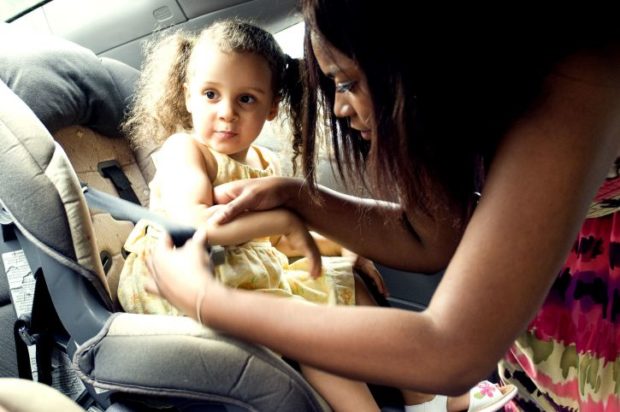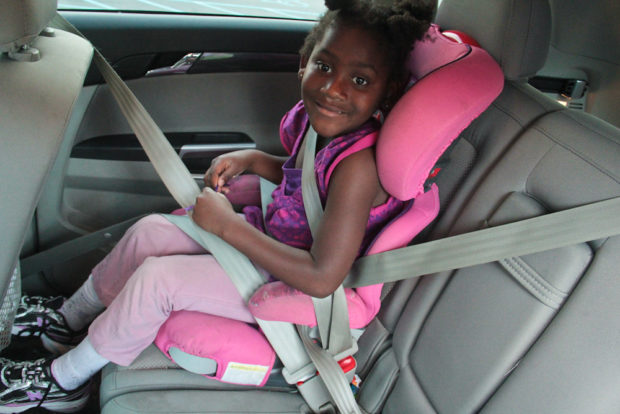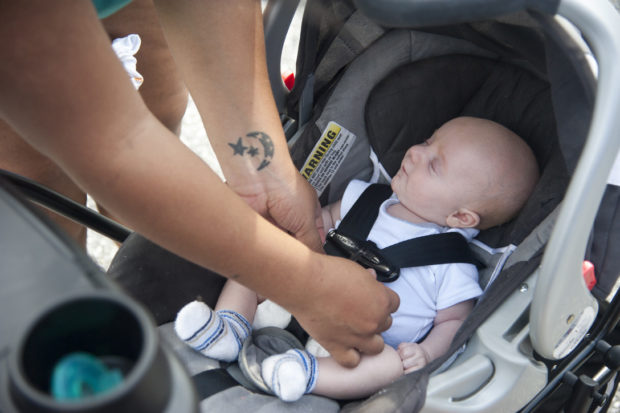Baby-proofing or child-proofing doesn’t stop at home. Most of the time, your kids will be at your vehicle as well. Our cars are generally safe, but only for adults. And no matter how careful you are in driving, accidents can still happen. To make sure that your child will be safe in the vehicle, it is important that he/she has his/her own car seat. Even if the driving distance seems short, it is essential that you have buckled your child in his/her car seat.
This is why it is important that you know everything about car seats. It may feel overwhelming to familiarize yourself with the parts and how to choose one, but it is really simple.
Let’s start with choosing the appropriate model for your child. Understandably, the number of units on the market can confuse any parents. How do you know which one is suitable for your toddler? What about your older kid who goes to school?

What are the Different Kinds of Car Seats
The different kinds of car seats are also the different stages that your child transitions into. You need to understand their differences to know, which would be appropriate for your child. Below are the types of car seats in chronological order:
Stage 1: Rear-facing Car Seats
Your baby starts in rear-facing seats. From the name itself, you install this car seat in your vehicle where your child ends up facing the rear instead of the front. Once your child exceeds the rear-facing seat’s requirements, you can use the next car seat stage.
Rear-facing seats are what your baby starts with usually when they’re 22 up to 35 pounds. This number can be higher, depending on the manufacturer as well. Some children will also require to use rear-facing seats up to three years old for their safety, as mentioned by this website.
They are meant to install rear-facing only and have the proper recline that is safe for babies who can’t support their heads yet. Rear-facing seats for infants also sometimes come with carrying handles and look like bassinets.
Besides these features, this car seat is the most convenient to use because they usually have a base that you’ll leave in the car. Because of this design, you can simply carry the seat itself in and out of the vehicle. You can find rear-facing seats in combination with strollers in travel systems as well.
Stage 2: Forward-facing Car Seats
Forward-facing seats are suitable for kids who can support their bodies in an upright posture. These seats use a 5-point harness as restraint and are the safest for children because of its attachment points. It holds your child’s shoulders and hips, which are the rigid points of the body in case of an impact.
Stage 3: Booster Seats
Once your child outgrows his/her harness seat, you can introduce him/her to a booster seat. However, note that as the stage goes up in car seats, it’s restraining capability also lowers. Therefore, even if your child outgrows the forward-facing seat, but he/she is still unable to maintain a safe posture throughout the car ride, we recommend getting a forward-facing seat that can accommodate him/her instead.
Booster seats can either be a highback or a backless type. Compared to the previous car seats, booster seats “boosts” your child’s height, so the vehicle seat belt meant for adults will fit him/her securely. And as you can see this page, some children ages 5 years and up can use booster seats, but it will still depend on their demeanor.

What are Convertible and 3-in-1 Seats?
Convertible Seats
Convertible seats, from the name itself, are convertible into the next stage. Sometimes, it can be from rear-facing to forward-facing or forward-facing to booster like these models here. They are one of the best seats that you can get because they can grow with your child, and you can use them longer safely.
3-in-1 Seats
Three-in-one seats have different modes. Depending on the manufacturer, you can have a combination of rear-facing, forward-facing, and booster. There are also forward-facing combined with the two types of booster seats, which are the highback and backless ones.
If we talk about value for money, there’s no doubt that these seats are winning. They offer higher weight and height limits, and you can use them for bigger babies and toddlers.
How Do You Know When Your Child Outgrows the Seat?
As we have mentioned earlier, the best indicators would be when he/she outgrows the limits set by the manufacturers, and if he/she is “behaved” enough to stay seated. If his/her shoulders are above the harness slots and the tops of his/her ears are at the same level with the top of the seat, it’s time to transition him/her to the next stage. Nonetheless, we will discuss below the recommendations of the CDC as well.
What are the Things to Consider When Choosing a Car Seat?
Your Child’s Age, Weight, and Height
Rear-facing seats are best for newborns to age 2. Forward-facing seats, on the other hand, can be used from ages 2 to 4 or up to 40 pounds, and then transition to a booster seat from ages 4 to 8 or when they are 4 feet and 9 inches tall. Overall, the first two stages are best for toddlers and pre-schoolers, while some school-age children can use a booster seat.
We don’t want to sound redundant, but we want to stress that your child’s demeanor is still a significant factor when choosing a car seat. Even if he/she is in the age range we mentioned, if he/she can’t sit upright and tends to move around his/her seat during the car ride, it’s best to keep him/her in the current car seat stage that can accommodate his/her height and weight. Some school-age children might complain in using forward-facing seats because they are “not a child anymore”, but know that you have to resist their pleas for their own safety.
Car Seat Features
One of the best ways to evaluate a car seat’s quality is if it has safety labels from reputable sources. One of these labels that you’ll see is the Federal Motor Vehicle Safety Standard 213. If a model has this label, this means that it has passed the requirements for child restraint systems. Besides this label, you can also check materials of the car seat itself if they have passed crash tests and if they proved that they can withstand impact.
Speaking of parts, make sure that everything from the shell, seat, up to the harness are made of high-quality and durable materials like aluminum, wear-free fabric, and shock-absorbing foam. Of course, always avoid any used car seat as much as possible, and make sure that upon purchasing one, it comes complete with instructions.
The National Highway Traffic Safety Administration rates seats and those that earned 4 or 5 stars mean that are easy to use, and the instructions are easy to understand. This is important because it significantly affects the safety and effectiveness of any car seat.
Other Important Information
Installing the Car Seat
Now that you know how to choose a car seat, the next topic that you should familiarize yourself with is how to install one. Know that each car seat comes with specific instructions, so make sure that you’re following them correctly. You should also check your vehicle’s manual to make sure that the seat will be compatible with it as well. Nonetheless, there is no excuse not to get a car seat because there are models that can fit well inside small cars.
Another information that we want to stress on is where you should put the car seat. The best place for the seat is at the back in the middle. For kids younger than 13 years, you can’t risk putting them in the front because of the air bags. They can inflate in case of a crash, and instead of protecting younger children, they can cause more damage due to the impact.
At the same time, make sure that you can secure the unit with the LATCH (lower anchors and tethers for children) system or seat belt. If you are not confident about installing your car seat, don’t hesitate to contact a child passenger safety technician to help you.
Is Your Child Properly Secured in the Seat?
Not all parents are aware of the proper position of a child in the seat. And to give you an idea, all the harness straps should lie flat against the body. None of them should be too loose or too tight, and twisted straps should be fixed.
In a rear-facing car seat, the harness straps should be at or below your child’s shoulder. On the contrary, the harness strap should be at or above your child’s shoulder is he/she is in a forward-facing seat.
Lastly, when using a booster seat, the seat belt should give a proper fit as well. The shoulder belt should be over the middle of your child’s shoulder without any twists. The lap belt, on the other hand, should not be on his/her abdomen. Instead, it should lie flat across your child’s upper thighs.




